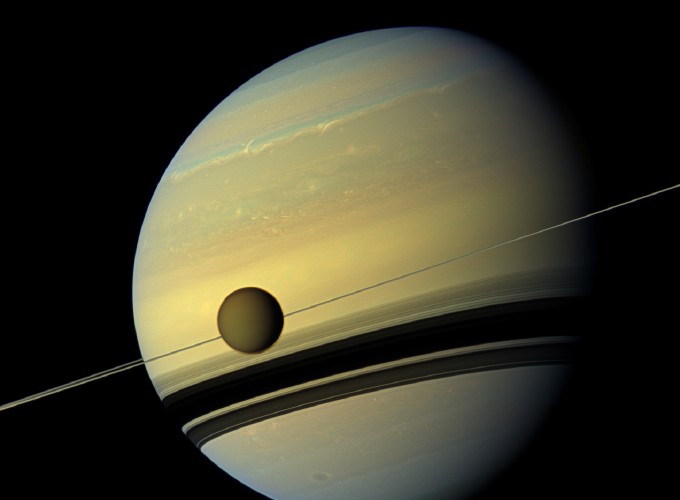The second work package of GIANTCLIMES seeks to complete the analysis of Cassini observations of Saturn’s seasonal atmosphere, and to extend the exploration over longer timespans using ground-based observations. This work is supported by Fletcher and by PDRA James Blake, and notable developments so far include:
Completion of Cassini: The Cassini mission came to an end in September 2017, and the ERC team at Leicester were involved in a number of media activities associated with the end of mission. Two publications have been prepared by Dr. Fletcher that deal with Cassini infrared spectroscopy spanning the entire mission, 2004 to 2017: the first investigates the evolution of Saturn’s tropical oscillations in the equatorial stratosphere, and the substantial perturbation caused by the Great Northern Storm of 2010-2013 (Fletcher et al., 2017, Nature Astronomy; http://dx.doi.org/10.1038/s41550-017-0271-5); the second looks at the changes occurring in the polar regions as Saturn’s northern summer approached and discovered that Saturn’s famous hexagon extends high into the stratosphere (Fletcher et al., 2018, Nature Communications, https://doi.org/10.1038/s41467-018-06017-3). With these two papers published, the ERC contribution to the Cassini analysis is now complete. In addition, PDRA Antunano published a detailed study of the dynamics of Saturn’s polar vortices (https://doi.org/10.1029/2018JE005764), Dr. Richard Achterberg (Collaborator) has used the high-resolution infrared observations from Cassini’s final orbits to understand the properties of Saturn’s polar cyclones (https://doi.org/10.1029/2018GL078157); and Dr. Sandrine Guerlet (Collaborator) used Cassini observations of Saturn’s limb to further understand the equatorial oscillations (https://dx.doi.org/10.1002/2017JE005419).
Long-term variability on Saturn: PDRA Blake is working to construct a database of Saturn’s global temperatures over a full Saturnian year (30 Earth-years), using data from the IRTF, VLT, and the Japanese Subaru telescope. A comparison of observations taken 30 years apart is showing hints of interannual variability (work presented at DPS in 2019). A record of VLT infrared imaging observations from 2008 to 2019 is being directly compared to the close-up measurements of the Cassini mission. This long-term record will be a key output of GIANTCLIMES.
New Spectroscopic Observations: In order to move beyond Cassini’s spectral capabilities, Blake is using high-resolution spectroscopy acquired by the TEXES spectrometer on the IRTF to study Saturn’s atmospheric chemistry. A paper on Saturn’s deuterium-to-hydrogen ratio has been submitted (Blake et al., 2020), with implications for the origin of Saturn’s atmosphere. Blake has been trained on the TEXES instrument in Hawaii, and proposals for new IRTF and VLT data have been accepted. Most importantly, Guaranteed-time observations of Saturn’s north polar atmosphere and rings (programme ID 1247) using the James Webb Space Telescope (JWST) have been awarded and prepared for execution in the first year of operations.
